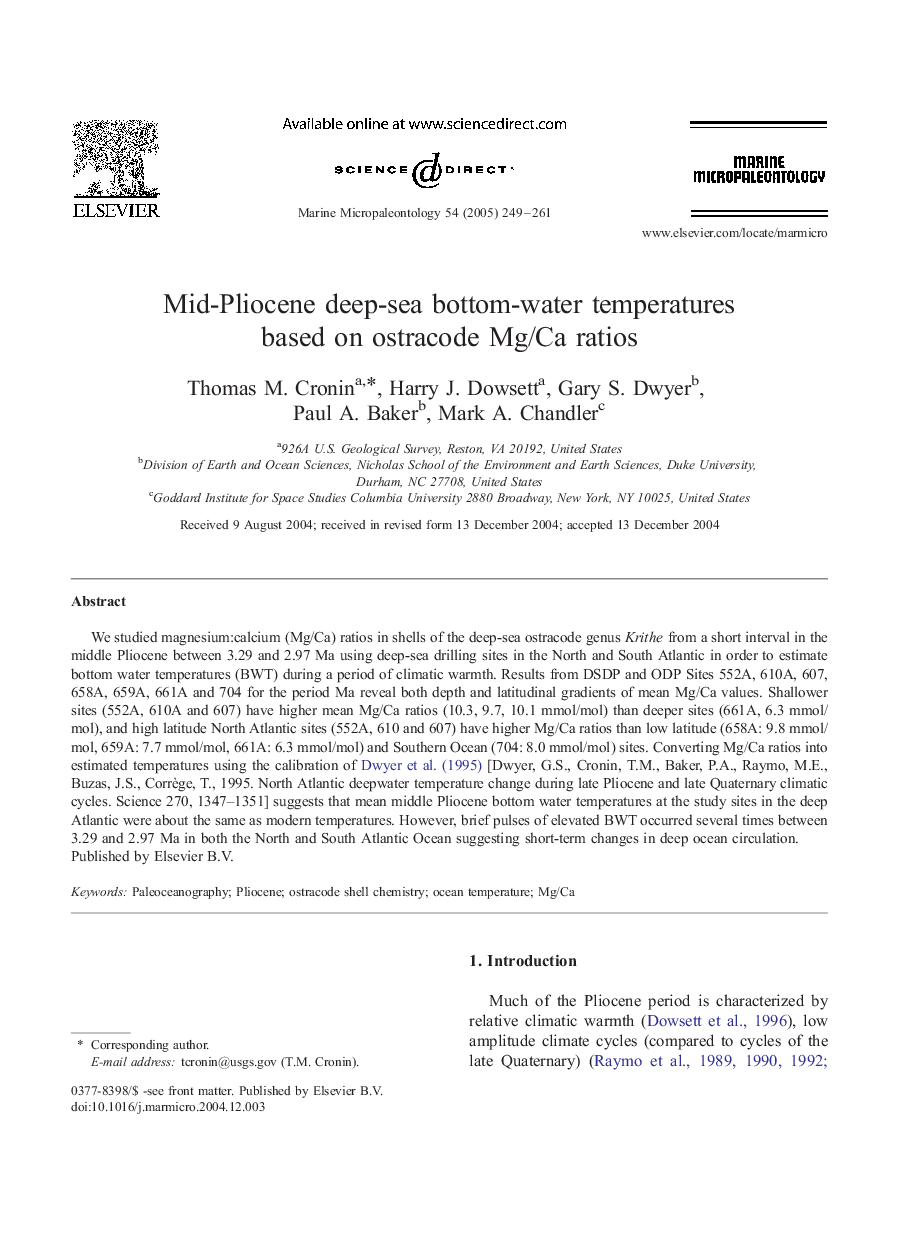| Article ID | Journal | Published Year | Pages | File Type |
|---|---|---|---|---|
| 9539568 | Marine Micropaleontology | 2005 | 13 Pages |
Abstract
We studied magnesium:calcium (Mg/Ca) ratios in shells of the deep-sea ostracode genus Krithe from a short interval in the middle Pliocene between 3.29 and 2.97 Ma using deep-sea drilling sites in the North and South Atlantic in order to estimate bottom water temperatures (BWT) during a period of climatic warmth. Results from DSDP and ODP Sites 552A, 610A, 607, 658A, 659A, 661A and 704 for the period Ma reveal both depth and latitudinal gradients of mean Mg/Ca values. Shallower sites (552A, 610A and 607) have higher mean Mg/Ca ratios (10.3, 9.7, 10.1 mmol/mol) than deeper sites (661A, 6.3 mmol/mol), and high latitude North Atlantic sites (552A, 610A, 607) have higher Mg/Ca ratios than low latitude (658A: 9.8 mmol/mol, 659A: 7.7 mmol/mol, 661A: 6.3 mmol/mol) and Southern Ocean (704: 8.0 mmol/mol) sites. Converting Mg/Ca ratios into estimated temperatures using the calibration of Dwyer et al. (1995) [Dwyer, G.S., Cronin, T.M., Baker, P.A., Raymo, M.E., Buzas, J.S., Corrège, T., 1995. North Atlantic deepwater temperature change during late Pliocene and late Quaternary climatic cycles. Science 270, 1347-1351] suggests that mean middle Pliocene bottom water temperatures at the study sites in the deep Atlantic were about the same as modern temperatures. However, brief pulses of elevated BWT occurred several times between 3.29 and 2.97 Ma in both the North and South Atlantic Ocean suggesting short-term changes in deep ocean circulation.
Related Topics
Physical Sciences and Engineering
Earth and Planetary Sciences
Palaeontology
Authors
Thomas M. Cronin, Harry J. Dowsett, Gary S. Dwyer, Paul A. Baker, Mark A. Chandler,
